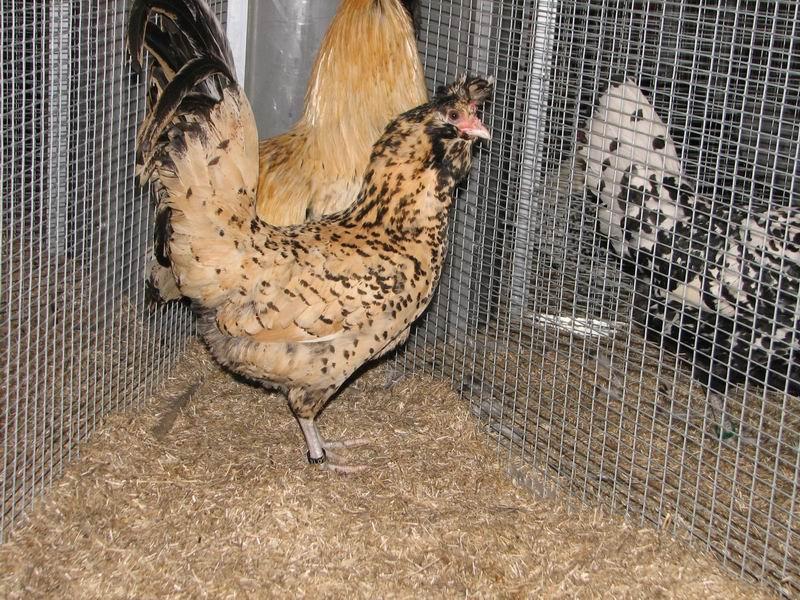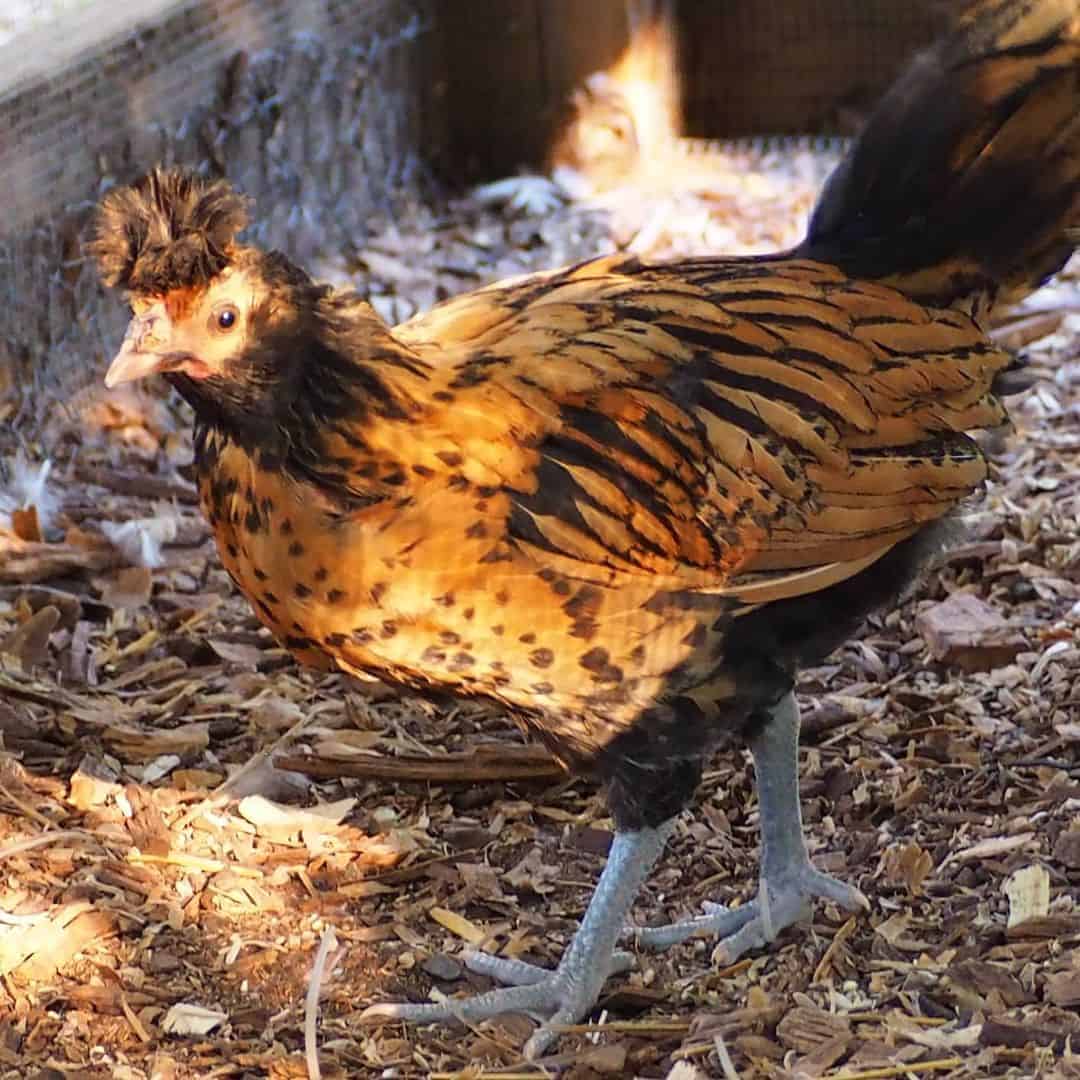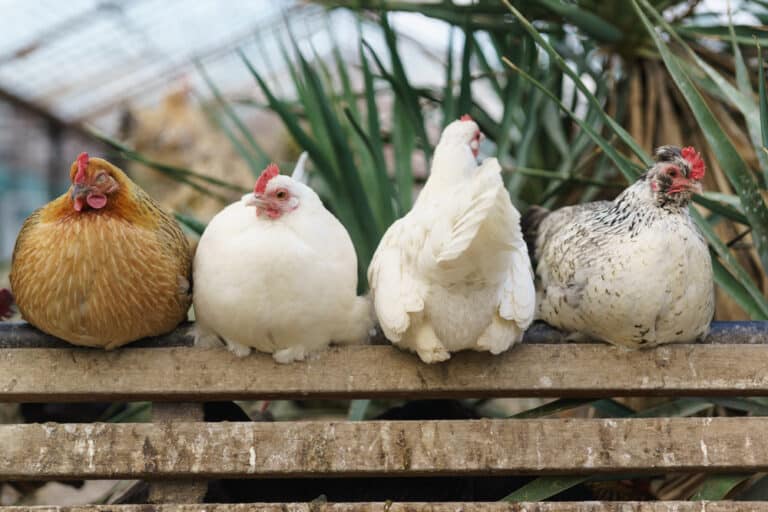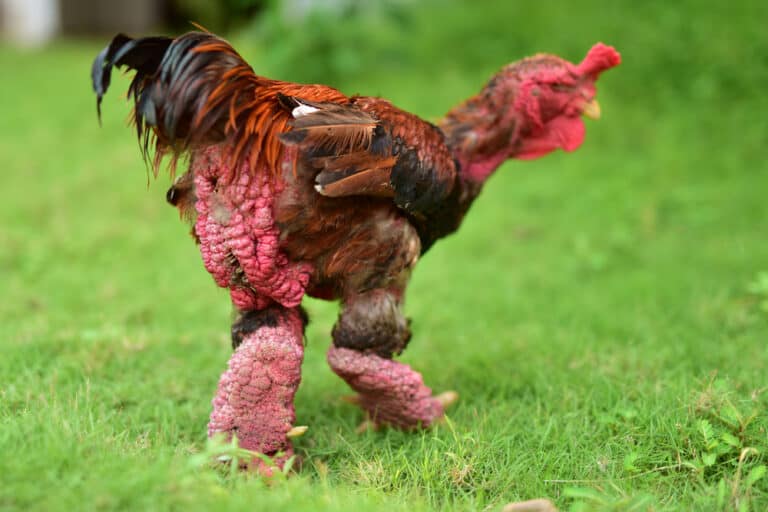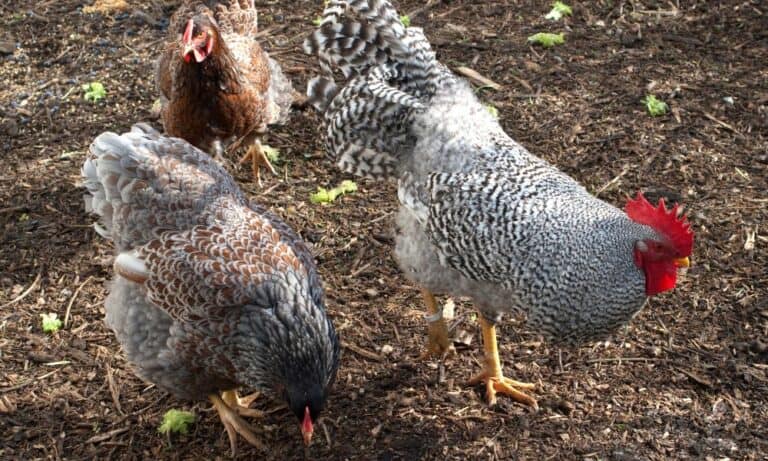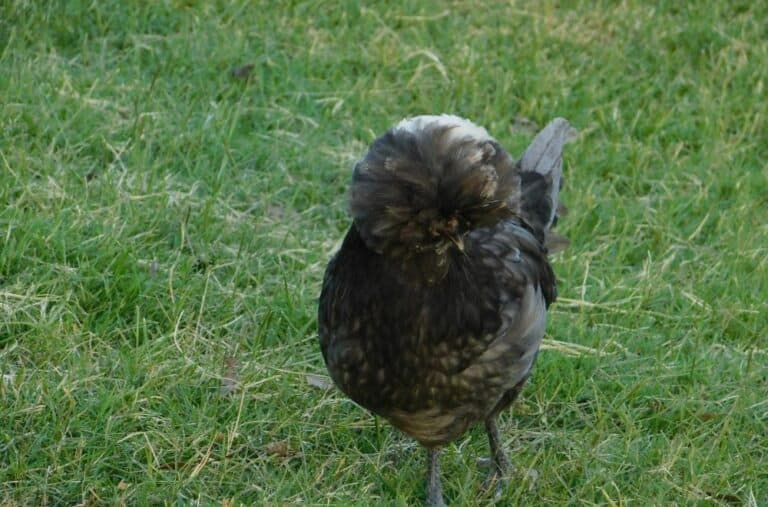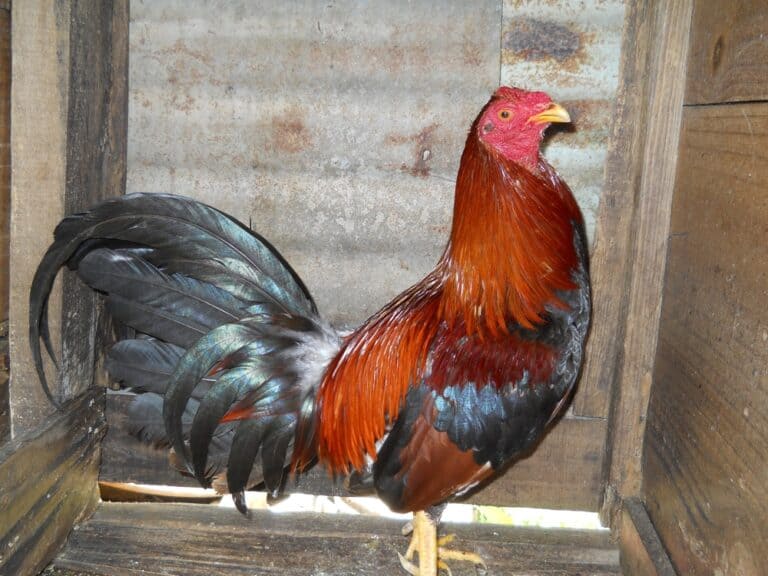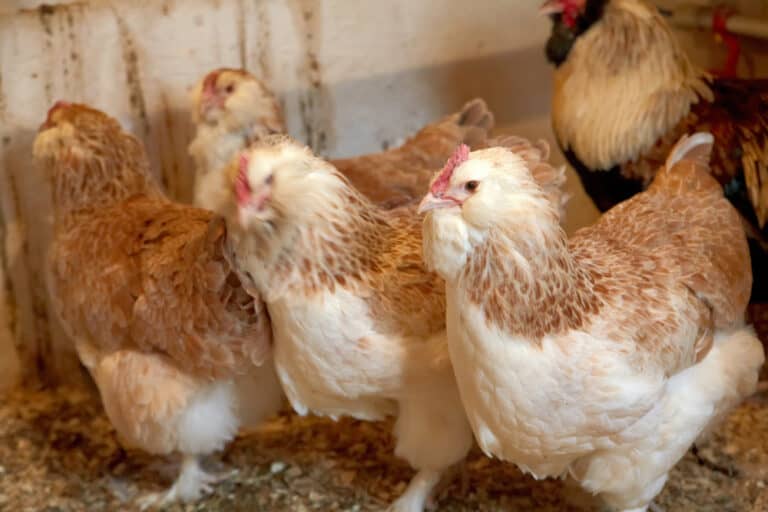Back in medieval times, Brabanter chickens were kept by royalty and nobility for their ornamental qualities. The chicken’s striking appearance and regal bearing made it so highly esteemed that you can even see these chickens depicted in medieval artwork!
Today, the Brabanters are amongst the rarest chicken breeds to exist.
In this post, we’ll explore this royal endangered breed in deep detail. We’ll learn everything from the unique characteristics of a Brabanter chicken to its quality of eggs.
Let’s get started!
At a Glance: Brabanter Chickens
| Origin | Brabant, Europe |
| Color | Black, blue, or splash |
| Average weight | 4-6 lbs |
| Size | Medium |
| Feather Pattern | Columbian |
| Comb Type | V-shaped |
| Distinct Feature | Crested head |
| Temperament | Calm and friendly |
| Noise-level | Low |
| Egg Color | Cream or slightly tinted |
| Egg Size | Medium/Large |
| Egg Production | Fair (150 – 200 eggs per year) |
| Broodiness | Moderate |
| Weather Tolerance | Cold-hardy |
| Confinement Tolerance | Good |
| Flock Tolerance | Good |
| Ability to Sense Threats & Predators | Great |
Origin of Brabanter Chickens
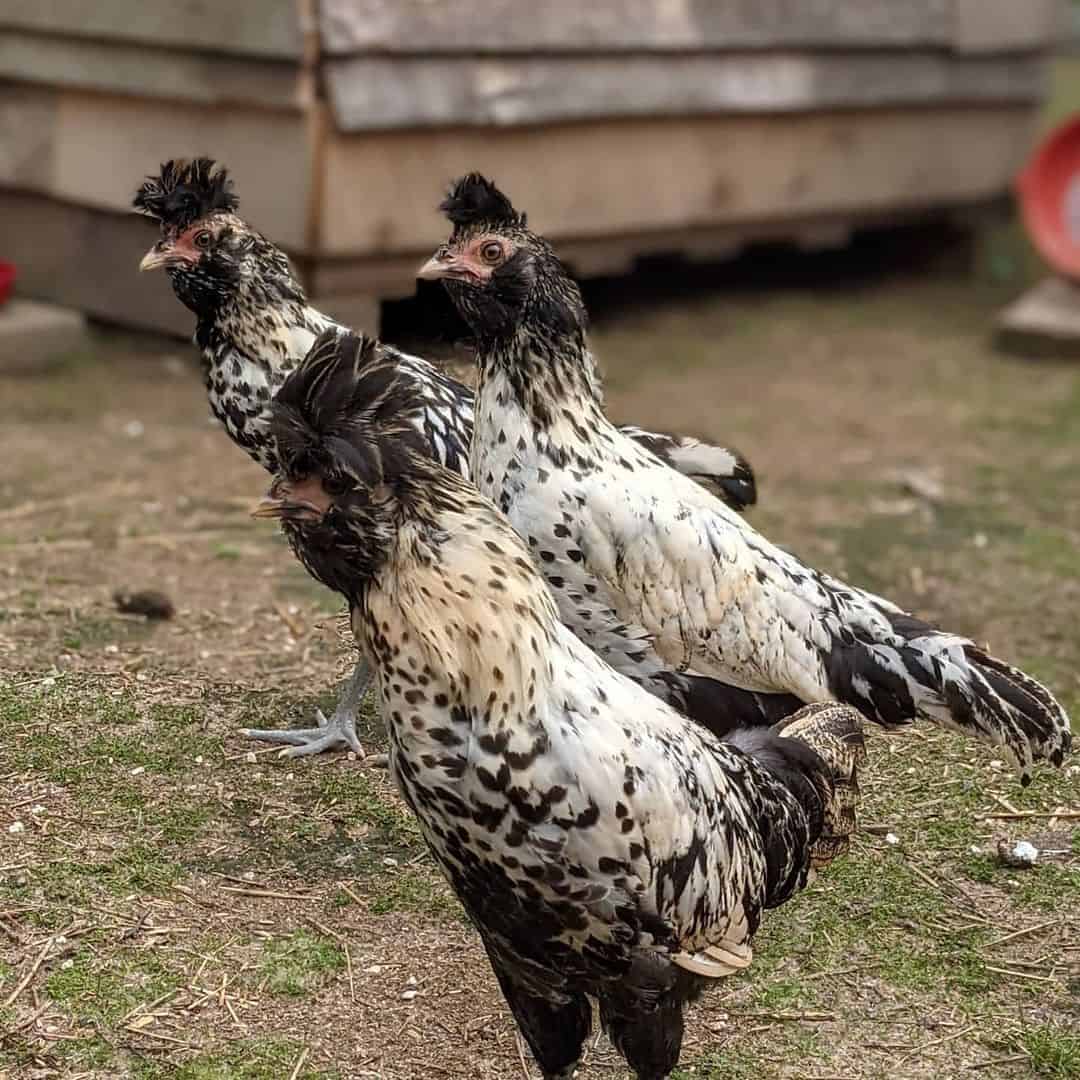
The name of this chicken breed says a lot about its origin. In fact, it gives away the name of its roots!
The Brabanters originate from the Brabant region that lies somewhere between the Netherlands and Belgium. To point it out precisely, it is the southern region of the Netherlands, which borders Antwerp and Limburg Belgian provinces. It also shares borders with South Holland and Gelderland.
So, does that make Brabanter chickens a Dutch breed? Yes, it does!
Although we’re not sure where exactly and how exactly this breed got recognized, there’s evidence of its Dutch origin in historical events and artifacts. For example, there’s an ancient painting from the 17th century featuring Brabanter chickens with other farm animals. It’s painted by a Dutch artist!
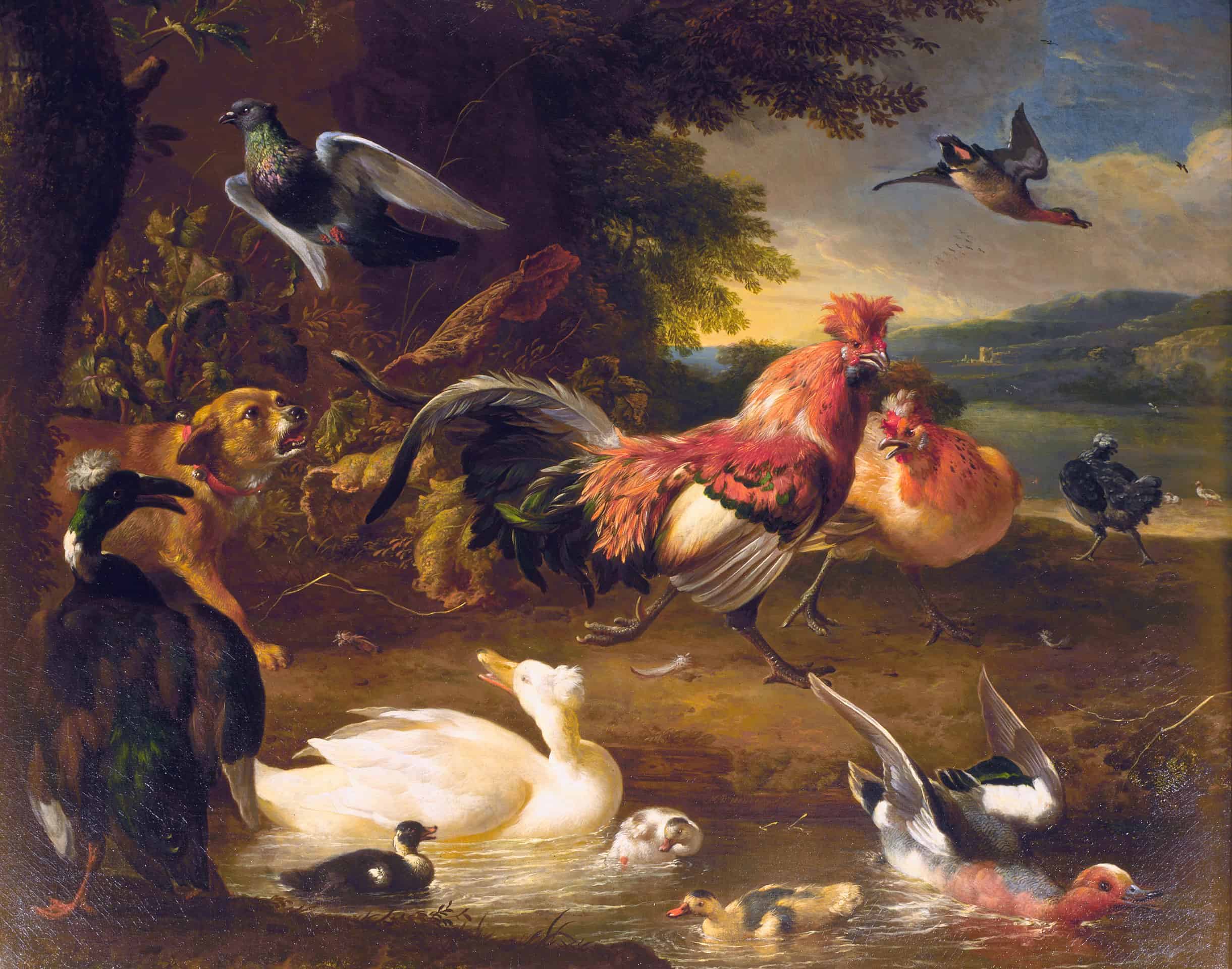
Apart from being Dutch, the artist of this painting (namely Melchior d’Hondecoeter) was also known for painting exotic birds – which indicates a Brabanter’s status of the time.
Another piece of evidence of the Brabanter chicken being a novelty comes from the norms of the Dutch Republic in the 17th century. Brabanters were popular among the upper classes and were kept in the gardens of the wealthy as ornamental birds.
It is worth noting that these chickens are believed to have originated in the 17th century and gained quick popularity amongst the nobles. But they also lost their fame quickly to Orpingtons and Leghorns.
They almost became extinct in the 1900s. But passionate chicken breeders crossbred the last of Brabanters with similar-looking breeds. As a result, the looks of the original Brabanters were preserved.
The rescued version of Brabanters is a lot smaller than the original ones. We’ll look more into their sizes in a bit. But despite the rescue, Brabanters are still counted amongst the top 10 rarest chicken breeds.
What do Brabanter Chickens look like?
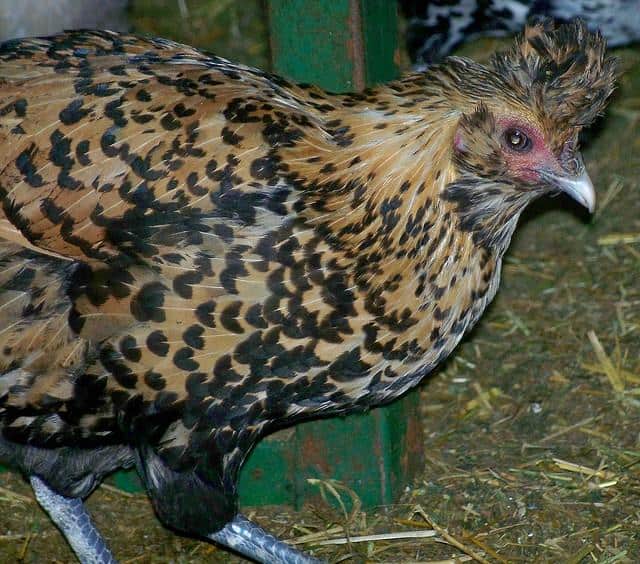
Now, let’s talk about the looks of these ancient chickens.
1. Weight & Size
In terms of weight and size, an average Brabanter chicken is very similar to the popular Leghorn. It weighs 4-6 lbs and is medium-sized.
But the rooster is usually heavier than the hen. A male Brabanter would weigh 5.5 lbs – 7.5 lbs, while a female Brabanter would weigh 4.5 lbs – 6.5 lbs. Note that this is the standard weight for the cross-bred Brabanter variant that exists in the present times. The original Brabanters were heavier.
There’s another smaller variant of the Brabanter chicken called Bantam. It was created in 1934 by cross-breeding a regular Brabanter with a Polish bearded bantam.
In terms of looks, the Bantam does not usually have a striking resemblance with Brabanters. But some of these may have the signature crested head. Even in this case, the size is much smaller than a regular Brabanter. Hence, bantams are sometimes known as miniature Brabanters.
2. Colors & Pattern
The most common varieties of Brabanters carry a spangled feather coat. And it’s often Chamois spangled or a creamy coat with gray/black spots.
Other colors and patterns that you’ll find a Brabanter in are as follows:
- Gold Spangled
- Mahogany
- Lavender
- Cream
- Cuckoo
- Buff
- Black
- Blue laced
- Gold
- Silver Spangled
- White
- Golden Blue Spangled
The gold-spangled Brabanter is the most valued of all.
3. Combs & Wattles
If you’re not already familiar, the comb of a chicken basically refers to the red-colored outgrowth on its head. It represents the egg production status of a chicken and indicates its health.
On the other hand, the wattles of a chicken are the fleshy flaps that hang at either side of the chicken’s throat. These are right behind the beak. They help a chicken cool down in hot weather.
In the case of Brabanters, the wattles may or may not be present. If your Brabanter has a wattle, experienced chicken breeders suggest it is highly likely to be a cross with other compatible breeds like Spitzhauben.
The wattles might as well be hidden in some Brabanters. That’s because this breed also comes with a trilobed beard and muffs. This means a cluster of feathers grows away from the face, around the side of the eyes, and joins into the beard (that lies below the beak) – meaning it also covers the earlobes.
As for the comb, every Brabanter carries a V-shaped comb. And it is one of the most distinguishing features of this chicken breed.
Its red outgrowing protrusions have two points that stick up. Usually, the size of these protrusions is really small.
4. Crested Head
Now, here’s the interesting bit: Brabanters have a lot of feathers around their head. So, apart from a trilobed beard and muffs, they also have a crested head.
It is a unique feature of a Brabentar chicken. And it is also a prominent indicator of the chicken’s ornamental value.
A crested head basically refers to a tuft of feathers growing upwards on the chicken’s head. Depending on the volume and length of feathers, the crested head may appear fan-shaped or crown-shaped.
In some Brabanters, the crests or tufts of feathers at the top of their head may even mean it covers their comb.
Temperament of Brabanters
Generally, the Brabanters are known to be calm, friendly, and inquisitive. These chickens get along well with humans, and if you plan to keep one as a pet (within the premises of your home), you’re likely to have some fun.
You’ll find the Brabanter exploring stuff and exhibiting goofy moves. You can teach it some light tricks and will find the chicken getting attached to you as its keeper.
This breed is also safe for kids. So much so, 8 or 10-year-olds can easily pick up a Brabanter and even play gently with it!
Some roosters are slightly aggressive. They may fly away or jump away as you try to pick them up. It’s best to keep these roosters outside your home.
Brabanters are also fairly noisy. They’ll squawk as soon as they sense a threat or danger. And often, it can be a false alarm. For example, if they see a large bug that they’re unable to tackle, they may make a noisy squawking sound.
It’s an excellent attribute if you plan to leave your Brabanters free-range. It will ward off any potential attackers and predators. But if you plan to keep your Brabanters confined, there’s a high chance you’ll get annoyed too soon.
Note that Brabanters are moderately tolerant of confinement.
Like all other chickens, they require some free time out in the open. And even when confined, you should keep a lot of space for walking, climbing, walking, and jumping. These chickens are fairly hyper and need sufficient space to channel their energy.
As far as flocks are concerned, Brabanters are docile and friendly. They get along well with other Brabanters and most other breeds.
However, owing to their docile nature, these chickens are also vulnerable to attacks by other breeds. So, make sure you house them with moderately-tempered chickens only.
Egg laying in Brabanters
Brabanter hens start laying eggs at the age of six months and lay 3-4 eggs every week. Hence, you can expect 150 – 200 eggs every year.
These chickens are not as broody. A Brabanter hen may itch to sit on an egg and hatch it sometimes. But mostly, these chickens do not have the urge to brood.
There’s a dispute regarding the time of egg-laying. Some keepers say that the Brabanters only lay eggs in spring and summer, while others argue that Brabanters lay eggs in fall and winter too.
The argument is mainly European VS American. So, perhaps, the American Brabanters have been modified genetically over generations and can now produce eggs all around the year.
The size of a Brabanter’s eggs is medium to large and the color of eggs is usually cream.
Brabanters Life Expectancy
On average, Brabanter chickens live up to 5 – 8 years if you take good care of them. They do not fall sick easily and can withstand cold, frostbite, and even severe heat. However, we advise you to install a heater or a cooler in the chicken coop, if you have consistently low or high temperatures.
Overall, the breed is fairly tough. It can survive in rough conditions.
In a Nutshell
Brabanter chickens are rare, exotic birds with an interesting history. You can raise them as your pets or breed them for commercial purposes. In any case, these chickens will have much to offer!
We hope our guide has provided valuable insight into Brabanter chickens. If there is something else you would like to know, please comment below!

